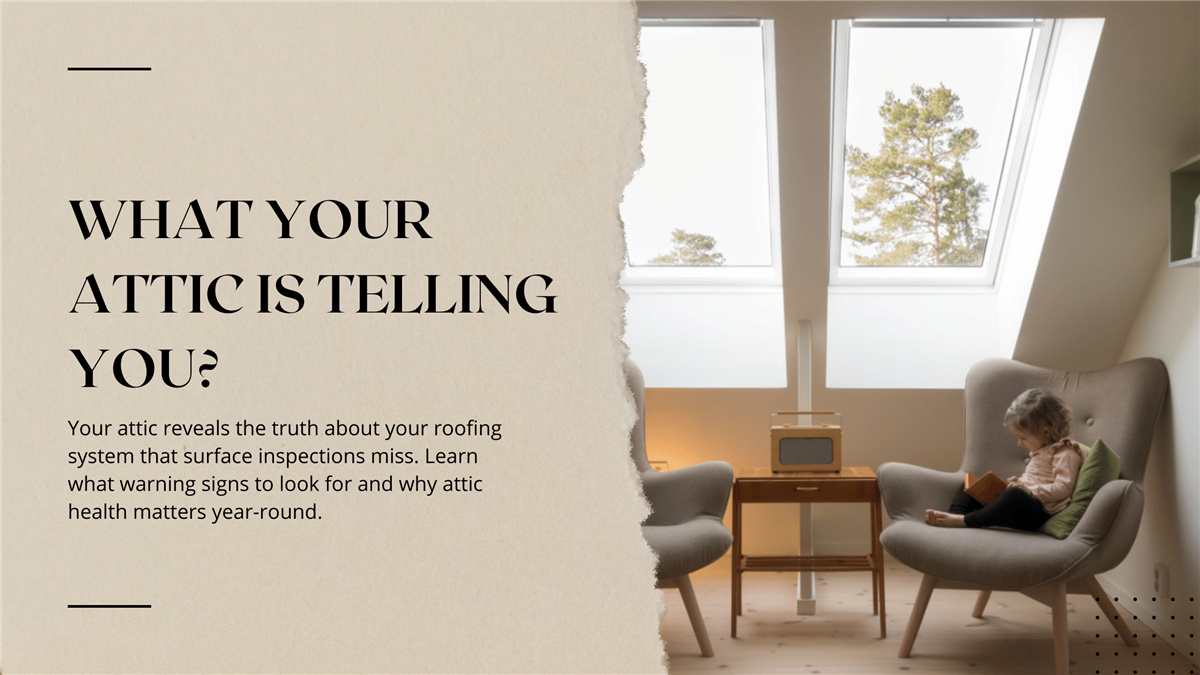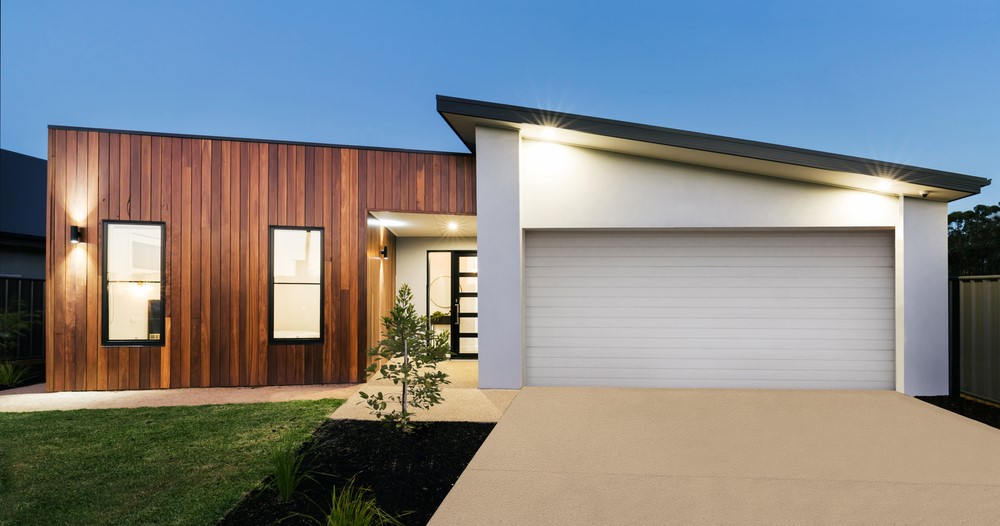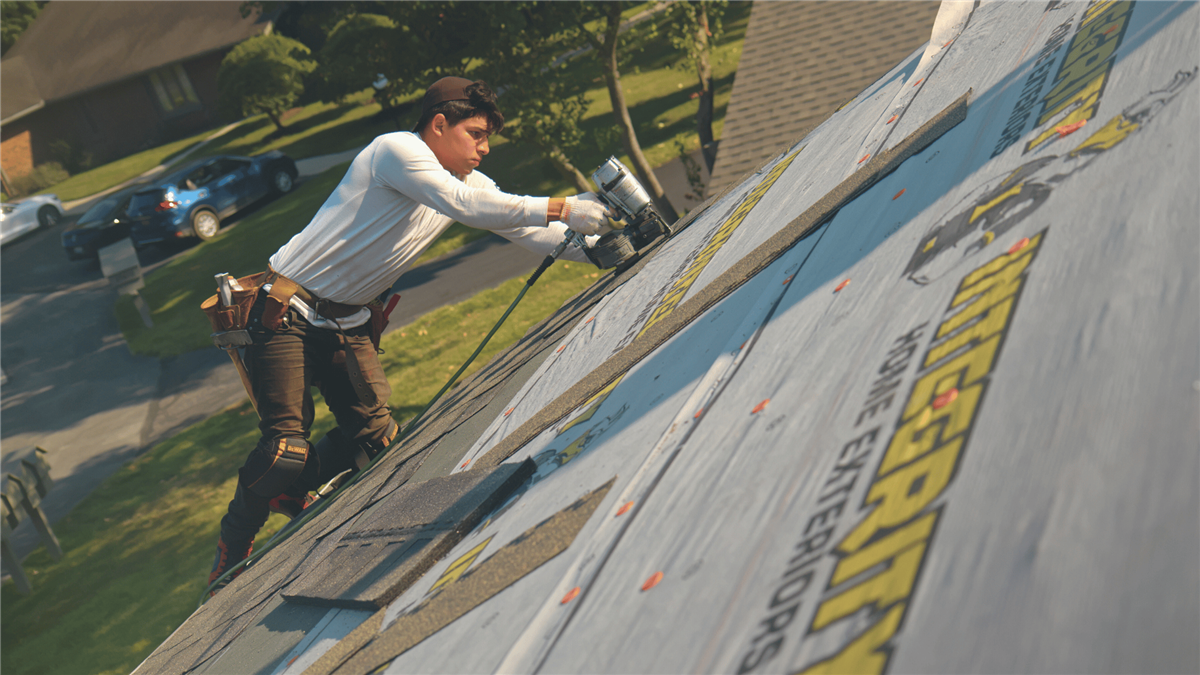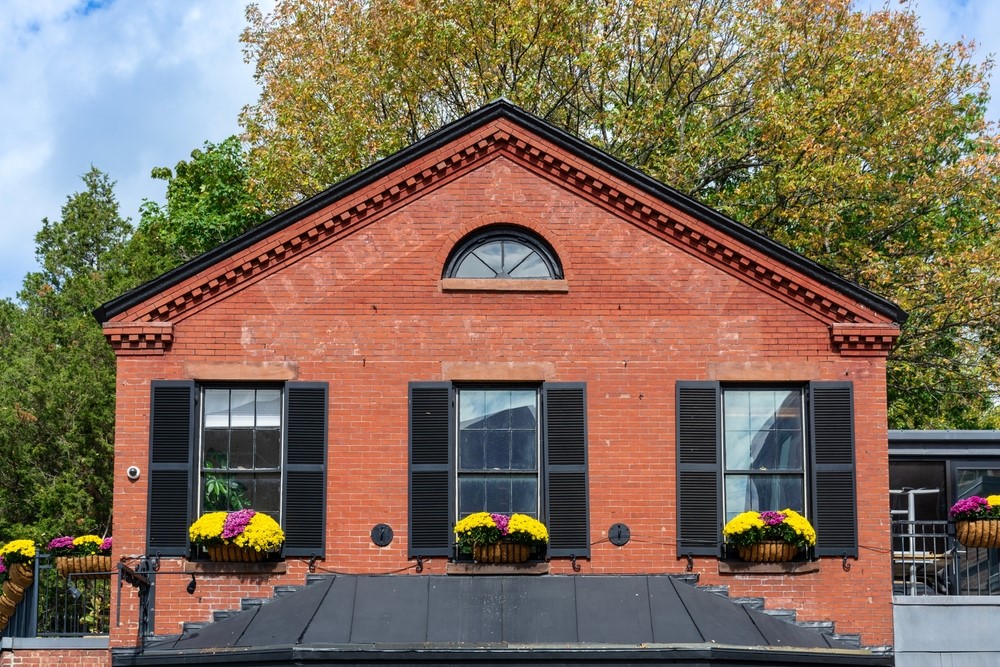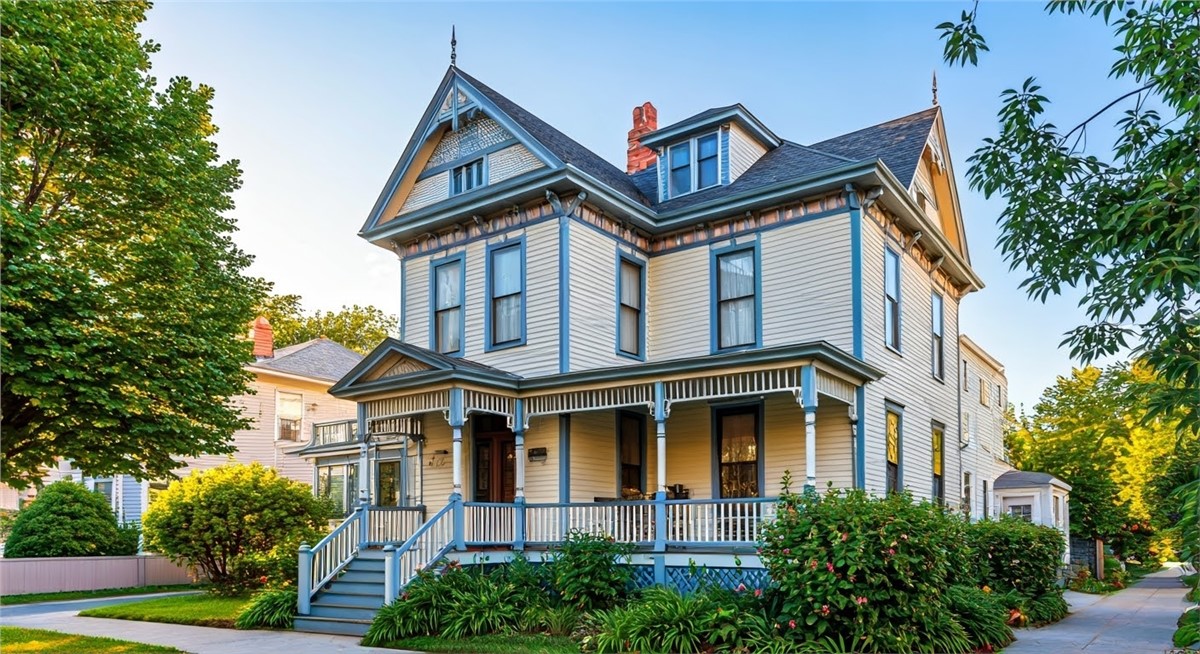
So, you've just purchased your dream home in Toledo, a charming Victorian with beautiful original features. You're thrilled to start making it your own, but there's one question lingering in the back of your mind: how old is that roof?
It's a question that many homeowners in Toledo overlook, especially those who've recently moved into an older home. But the truth is, knowing the age of your roof can be just as important as knowing the age of your home's foundation or plumbing. Why? Because an aging roof can be a ticking time bomb, especially in Toledo's unpredictable climate.
Think about it. Those charming old homes that give Toledo its unique character have also witnessed decades of harsh winters, scorching summers, and everything in between. Their roofs have endured countless freeze-thaw cycles, heavy snow loads, and relentless beatings of the summer sun.
But here's the thing, you wouldn't drive a car without knowing its maintenance history, would you? So why treat your roof any differently?
In this whitepaper, we'll uncover the hidden dangers lurking beneath those aging shingles, revealing the impact of Toledo's unique climate on your roof's lifespan. We'll explore startling statistics about the state of Toledo's roofs and equip you with the knowledge to make informed decisions about your home's protection.
Ready to become an expert on your own roof? Let's dive in.
The Cost of Neglect: When Aging Roofs Fail
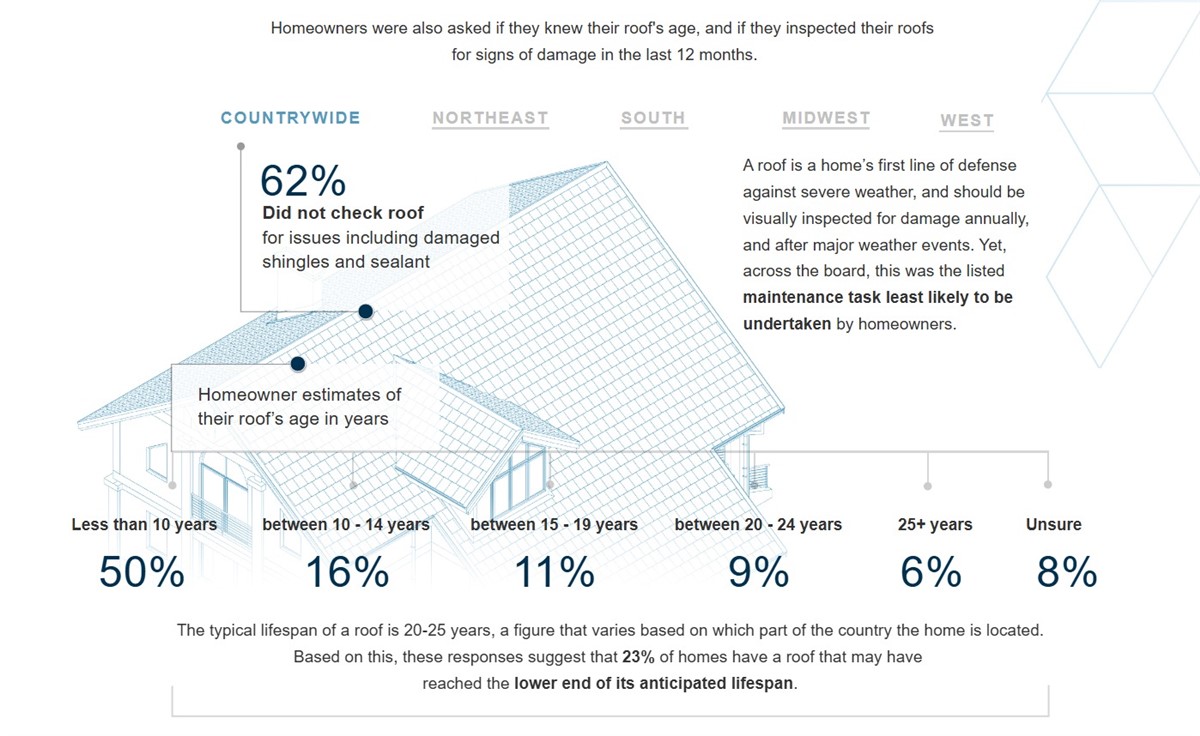
But what happens when those aging roofs start to fail? It's not just about a few missing shingles or a minor leak. The consequences can be far-reaching and costly.
- Interior Damage: Water damage from leaks can ruin ceilings, walls, and even furniture.
- Mold and Mildew: Trapped moisture creates a breeding ground for mold and mildew, posing health risks and further damaging your home.
- Structural Damage: A compromised roof can weaken the overall structure of your home, leading to costly repairs.
- Decreased Energy Efficiency: A damaged roof can lead to drafts and poor insulation, increasing your energy bills.
- Diminished Home Value: A neglected roof can significantly decrease your home's value, making it harder to sell or refinance.
These are just a few of the potential consequences of neglecting an aging roof. It's a silent threat that can quickly escalate into a major problem, causing stress, disruption, and financial burden for homeowners.
The State of Toledo's Aging Roofs

Did you know that a whopping 50% of homes in Toledo were built before 1965? That means half of our city's roofs have been weathering the storms for over half a century! Now, think about the wear and tear. Countless freeze-thaw cycles, scorching summers, and maybe even a hailstorm or two. Those aging shingles have certainly seen better days.
In fact, the median age of a home in Toledo is 55 years old. That puts a significant portion of our city's roofs well past their prime, making them more susceptible to damage and deterioration. And while those classic asphalt shingles have served admirably, they weren't designed for the challenges of today's climate.
Here's the thing: those aging shingles are particularly vulnerable to the extreme temperature swings we experience in Toledo. The freeze-thaw cycles of winter can cause them to become brittle and crack, while the intense summer heat can lead to warping and deterioration.
Toledo's Climate and Its Impact on Roofs
| Oldest Homes | Age* |
|---|---|
| 1. Scranton–Wilkes-Barre, PA | 61 |
| 2. Springfield, MA | 61 |
| 3. Youngstown-Warren-Boardman, OH-PA | 57 |
| 4. New Haven-Milford, CT | 57 |
| 5. Syracuse, NY | 57 |
| 6. Canton-Massillon, OH | 56 |
| 7. Toledo, OH | 55 |
| 8. Worcester, MA-CT | 55 |
| 9. Davenport-Moline-Rock Island, IA-IL | 55 |
| 10. Peoria, IL | 54 |
| 11. Akron, OH | 54 |
| 12. Bridgeport-Stamford-Norwalk, CT | 54 |
| 13. Flint, MI | 53 |
| 14. Trenton-Princeton, NJ | 53 |
| 15. Allentown-Bethlehem-Easton, PA-NJ | 53 |
Let's talk weather, Toledo. We all know it can be a bit unpredictable, right? One day it's a winter wonderland, the next, it's a summer scorcher. But those fluctuating temperatures and those dramatic seasonal shifts aren't just a topic for small talk – they're a major factor in your roof's lifespan.
Toledo has what's called a humid continental climate. That means we get four distinct seasons, each with its personality. Our average annual temperature is a comfortable 50.8°F, but don't let that fool you. We can swing from a chilly 21°F in winter to a sweltering 85°F in summer. That's a pretty big range, and it puts a lot of stress on those aging shingles.
Then there's the precipitation. On average, we get about 35 inches of rain and snow each year, with most of it falling in the spring and summer. All that moisture, combined with the temperature swings, creates a challenging environment for any roof, especially an older one.
Think of it this way: your roof is like a protective shell, shielding your home from the elements. But when that shell is constantly expanding and contracting, freezing and thawing, getting soaked and then drying out, it's bound to weaken over time.
That's why understanding Toledo's climate is so important. It's not just about knowing whether to grab an umbrella or a snow shovel. It's about understanding how those weather patterns affect your home, your roof, and your investment.
Now, let's take a virtual tour of a Toledo home throughout the year. It's January, and a thick blanket of snow covers the roof. Icicles hang from the gutters, and a layer of ice has formed along the edges. Beautiful, right? But as the sun peeks out and temperatures rise, that picturesque scene can turn into a homeowner's nightmare. The snow melts, but the ice dams prevent proper drainage. Water backs up under the shingles, seeping into your attic and causing costly damage.
Fast forward to July. The sun beats down relentlessly, baking the roof under the intense heat. Those asphalt shingles, once sturdy and resilient, begin to soften and warp. UV rays cause them to dry out and crack, leaving your home vulnerable to the elements. And as the sun sets and temperatures drop, the sudden contraction can cause further damage, leading to leaks and costly roof repairs.
This is the reality of living in Toledo, a city with four distinct seasons and a wide range of temperatures. We experience everything from freezing winters to sweltering summers, and our roofs bear the brunt of these extreme conditions.
Winter's Wrath:
Ever wonder why your energy bills skyrocket in the winter? Sure, we crank up the heat, but a significant portion of that warmth could be escaping through your roof – especially if it's an older one battling the harsh Toledo winter.
Those beautiful icicles glistening along your gutters? They might be a sign of ice dams, a common winter woe that can wreak havoc on your roof. As snow melts on warmer sections of your roof and refreezes along the colder edges, it creates a barrier that traps water. This trapped water can back up under shingles, leading to leaks, damaging your roof deck, and even staining your interior ceilings.
Then there's the sheer weight of the snow itself. A cubic foot of snow can weigh anywhere from 5 to 20 pounds, depending on its density. Now, imagine that multiplied by the entire surface area of your roof! That's a tremendous amount of weight bearing down on your home's top layer, potentially causing structural stress and damage, especially for older roofs.
And don't forget about the constant freeze-thaw cycles that characterize Toledo winters. Water seeps into tiny cracks and crevices in your shingles, freezes, and expands. Then, as temperatures rise, the ice thaws, contracts, and the process repeats itself. This relentless expansion and contraction can cause those cracks to grow, eventually leading to leaks and premature shingle failure.
Winter in Toledo is a true test of your roof's resilience. But by understanding the specific challenges it poses, you can take steps to protect your home and ensure its warmth and safety throughout the season.
Summer's Stress:
Ever stepped outside on a sweltering July day and felt the heat radiating off your roof? It's like an oven up there! While you're seeking refuge in the air conditioning, your roof is facing the full brunt of the summer sun. And if your roof is nearing its golden years, those intense summer days, especially after a harsh winter, can take a toll.
Think about it: your roof has just battled months of freezing temperatures, heavy snow, and ice dams. Now, as the weather warms and the snow melts, it begins to dry out and thaw. But this transition isn't always smooth sailing.
Those cracks and weaknesses that may have developed during the winter? They're now exposed and vulnerable to the increasing rainfall that often accompanies spring. Water can seep into these cracks, causing further damage and potentially leading to leaks.
As spring gives way to summer, the real challenge begins. The sun beats down with increasing intensity, and your roof bakes under the scorching heat. Those asphalt shingles, already potentially weakened by the winter, start to soften and become more pliable. They might even warp or buckle under the stress, creating an uneven surface that's more susceptible to damage.
And don't forget about those UV rays! They're like tiny daggers, relentlessly attacking your shingles and causing them to dry out, crack, and lose their protective granules. It's a slow and insidious process, but over time, it can significantly weaken your roof's defenses.
Then, as the sun sets and temperatures drop, your roof experiences another shock – thermal shock. The sudden contraction can exacerbate existing cracks and create new ones, further compromising your roof's integrity.
This constant cycle of freezing and thawing, expanding and contracting, takes a toll on your roof, especially as it ages. The transition from winter to summer is a particularly vulnerable time, as your roof adjusts to the changing conditions and faces new challenges.
By understanding these challenges, you can take proactive steps to protect your home and ensure its longevity.
Preventative Measures for Aging Roofs: Protecting Your Investment
We've explored the challenges, but now let's empower you to take action. Just like regular checkups keep you healthy, preventative maintenance can significantly extend the life of your roof and save you money in the long run. But where do you start?
Here's the thing: most homeowners don't realize the importance of preventative roof maintenance until it's too late. A recent survey found that only 40% of homeowners schedule regular roof inspections. That means a whopping 60% are potentially at risk for costly repairs or even premature roof replacement.
But you're not one of them, are you? You're informed and proactive, and you're ready to take control of your roof's health. So, let's dive into some key preventative measures that can make all the difference:
- Regular Inspections: Your Roof's Annual Checkup: Think of it like visiting your doctor for a checkup. Scheduling professional roof inspections, ideally twice a year – especially in spring and fall – can catch minor issues before they become major problems. In fact, studies have shown that regular inspections can extend the life of your roof by up to 20%.
- Proper Ventilation: Let Your Roof Breathe: Did you know that poor attic ventilation is one of the leading causes of premature roof failure? Ensuring adequate ventilation helps regulate temperature and moisture levels, preventing ice dams in winter and reducing heat buildup in summer.
- Insulation: A Blanket of Protection: Proper attic insulation works hand-in-hand with ventilation to maintain a consistent temperature, reducing the stress on roofing materials from those dramatic temperature fluctuations we experience in Toledo.
- Gutter Maintenance - Clear the Path: Keeping those gutters clean and free of debris is like giving your roof a clear drainage system. This prevents water from backing up and causing damage, especially during those heavy spring and summer rains.
- Repair and Maintenance - Don't Delay, Act Today: If you notice any signs of damage, such as missing or cracked shingles, don't wait to address them. Prompt repairs can prevent further deterioration and save you money in the long run.
Remember, a stitch in time saves nine. By taking a proactive approach to roof maintenance, you're not just protecting your home; you're protecting your investment and ensuring your peace of mind.
Conclusion: Protecting Your Investment in Toledo's Climate
The journey through Toledo's seasons has revealed the unique challenges faced by aging roofs in our city. By understanding the effects of temperature fluctuations, precipitation, and UV radiation, homeowners can take proactive steps to protect their investments and ensure the longevity and performance of their roofs.
Regular inspections, proper ventilation, and timely maintenance are crucial for safeguarding your home against the elements. Remember, prevention is key. Just as you wouldn't wait for your car to break down before taking it for maintenance, don't wait for your roof to show signs of damage before taking action.
When choosing a new roof or maintaining an existing one, it's essential to consider the specific vulnerabilities of different roofing materials to the local climate.
Ultimately, the best way to protect your roof is to stay informed and be proactive. Consult with a local roofing professional for a thorough inspection and discuss preventative maintenance options. By taking the time to understand your roof's needs and investing in proper care, you can ensure that your home remains a safe and comfortable haven for years to come.
Tags
Subscribe to Integrity Home Exteriors's Blog
